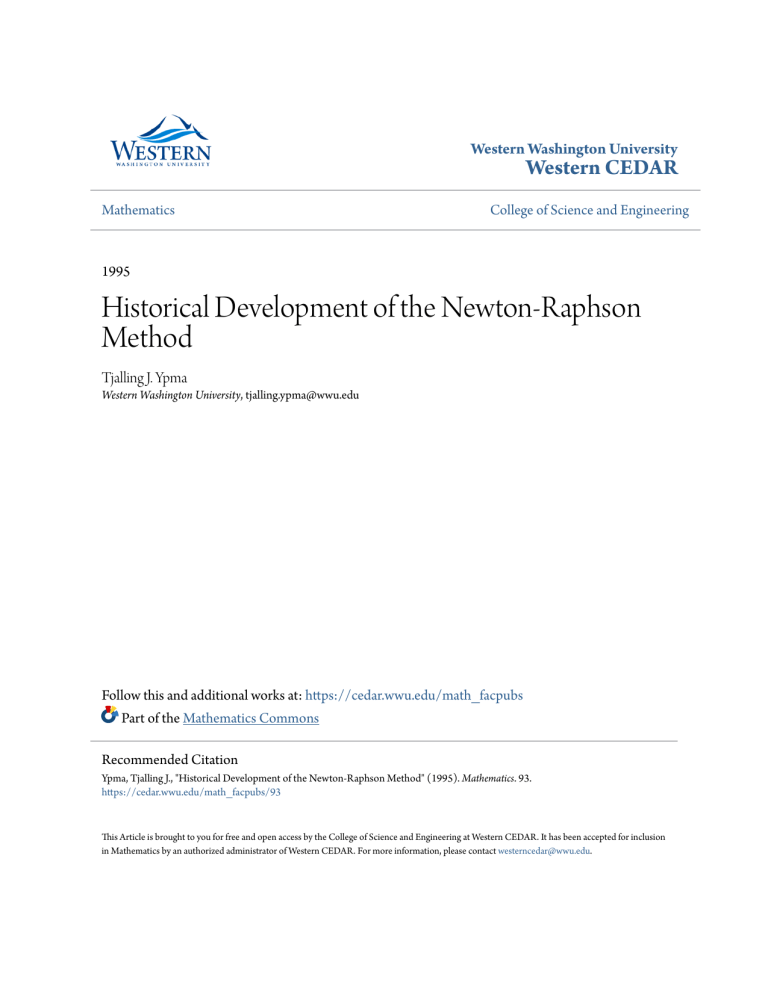
Western Washington University
Western CEDAR
Mathematics
College of Science and Engineering
1995
Historical Development of the Newton-Raphson
Method
Tjalling J. Ypma
Western Washington University, tjalling.ypma@wwu.edu
Follow this and additional works at: https://cedar.wwu.edu/math_facpubs
Part of the Mathematics Commons
Recommended Citation
Ypma, Tjalling J., "Historical Development of the Newton-Raphson Method" (1995). Mathematics. 93.
https://cedar.wwu.edu/math_facpubs/93
This Article is brought to you for free and open access by the College of Science and Engineering at Western CEDAR. It has been accepted for inclusion
in Mathematics by an authorized administrator of Western CEDAR. For more information, please contact westerncedar@wwu.edu.
Society for Industrial and Applied Mathematics
Historical Development of the Newton-Raphson Method
Author(s): Tjalling J. Ypma
Source: SIAM Review, Vol. 37, No. 4 (Dec., 1995), pp. 531-551
Published by: Society for Industrial and Applied Mathematics
Stable URL: http://www.jstor.org/stable/2132904
Accessed: 21-10-2015 17:15 UTC
Your use of the JSTOR archive indicates your acceptance of the Terms & Conditions of Use, available at http://www.jstor.org/page/
info/about/policies/terms.jsp
JSTOR is a not-for-profit service that helps scholars, researchers, and students discover, use, and build upon a wide range of content
in a trusted digital archive. We use information technology and tools to increase productivity and facilitate new forms of scholarship.
For more information about JSTOR, please contact support@jstor.org.
Society for Industrial and Applied Mathematics is collaborating with JSTOR to digitize, preserve and extend access to SIAM
Review.
http://www.jstor.org
This content downloaded from 140.160.178.72 on Wed, 21 Oct 2015 17:15:03 UTC
All use subject to JSTOR Terms and Conditions
SIAM REVIEW
Vol.37, No. 4, pp. 531-551,December1995
(
1995SocietyforIndustrial
andAppliedMathematics
003
HISTORICAL DEVELOPMENT OF THE NEWTON-RAPHSON METHOD*
TJALLINGJ. YPMAt
Abstract.Thisexpository
papertracesthedevelopment
oftheNewton-Raphson
methodforsolvingnonlinear
theextant
andpublications
ofIsaac Newton,JosephRaphson,andThomas
algebraicequationsthrough
notes,letters,
fromtheiterative
differed
Simpson.It is shownhowNewton'sformulation
processof Raphson,and thatSimpson
was thefirst
in termsof fluxional
to givea generalformulation,
calculus,applicableto nonpolynomial
equations.
ofthemethodtosystemsofequationsis exhibited.
Simpson'sextension
Key words.nonlinear
equations,iteration,
Isaac Newton,JosephRaphson,Thomas
Newton-Raphson
method,
Simpson
65H10
AMS subjectclassifications.
01A45,65H105,
1. Introduction.The iterative
algorithm
(1.1)
x
-f
Xi= (xi)/f-(xi)
forsolvinga nonlinear
algebraicequationf(x) = 0 is generallycalledNewton'smethod.
to as theNewton-Raphson
method.The method(1.1), and its
Occasionallyit is referred
the
solution
of
of
nonlinear
extensionto
systems
equations,formsthebasis forthemost
forsolvingnonlinear
frequently
usedtechniques
algebraicequations.In thisexpository
paper
we tracethedevelopment
of themethod(1.1) by exhibiting
and analyzingrelevant
extracts
fromthepreserved
and publications
of Isaac Newton,JosephRaphson,and
notes,letters,
ThomasSimpson.Muchof thesequenceof eventsrecounted
hereis familiar
to historians,
and thematerialson whichthispaperis based are fairlyreadilyavailable;hencewe make
no claimsto originality.
Ourpurposeis simplyto providea comprehensive
accountof the
historical
rootsoftheubiquitous
process(1.1), assembling
a number
ofpreviously
published
accountsintoa readilyaccessiblewhole.
In ??2 and3 we showthatmethods
whichmaybe viewedas replacing
thetermf'(xi) in
difference
oftheform
(1.1) bya finite
approximation
(1.2)
f'(xi) ; ht1[f(xi + hi)-f
(xi-],
andalso thesecantmethodin which
(1.3)
f'(xi)
f(Xi)-f
Xi-Xi-l
wereprecursors
tothemethod(1.1). Froma modemperspective
eachofthemethods
described
froma linearization
oftheequationf (x) = 0. In ?4 we review
by(1.1)-(1.3) arisesnaturally
Newton'soriginalpresentation
of his method,contrasting
thiswiththecurrent
formulation
forpolynomial
formulation
(1.1) andwithRaphson'siterative
equationsdiscussedin?7. There
is no clearevidencethatNewtonusedanyfluxional
calculusin deriving
hismethod,
though
we showin ?6 thatinthePrincipiaMathematica
Newtonappliedhistechnique
inan iterative
manner
toa nonpolynomial
fornonlinear
equation.Simpson'sgeneralformulation
equations
intermsofthefluxional
in ?8,andwe discussthereSimpson'sextension
calculusis presented
oftheprocessto systems
ofnonlinear
equations.
*ReceivedbytheeditorsOctober6, 1993;acceptedforpublication
(in revisedform)January
12, 1995.
of Mathematics,
tDepartment
WesternWashington
98225 (t j ypma@
University,
Bellingham,Washington
nessie.cc.wwu.edu).
531
This content downloaded from 140.160.178.72 on Wed, 21 Oct 2015 17:15:03 UTC
All use subject to JSTOR Terms and Conditions
532
TJALLINGJ.YPMA
In theabsenceofdirectaccess to sourcematerials
we havebasedthispaperon a recent
translation
oftherelevant
worksofViete[19],theinvaluable
volumesofNewton'smathematical paperscollectedandannotated
byWhiteside[21],Newton'scorrespondence
reproduced
byRigaud[14] andTumbull[18],thethird
editionofNewton'sPrincipiaMathematica
inthe
editionbyCajori[4] withcommentary
byKoyreandCohen[11],andcopiesofRaphson'stext
[12] andSimpson'sbook[16]. Forreferences
totheworkandinfluences
ofothermathematicianswe havereliedonthenotesin [13],[21] andrelatedcommentary
intheconcisesummary
ofthismaterial
on theworkofNewtonwe are
byGoldstine[6,pp. 64-68]. In ourcomments
heavilyindebted
tothenotesin [21],whiletherecentpapers[17] and[7] providemuchinsight
intothecontributions
ofRaphsonandSimpson,respectively.
The references,
particularly
[6]
and [21],providedetailedbibliographic
references
torelevant
sourcematerials.
Thebiography
byWestfall
[20] includesincisivediscussionsofNewton'sgeneralmathinadditiontohismanysignificant
ematicaldevelopment
achievements-scientific
andotherwise. The fewverifiable
factsconcerning
thelifeof JosephRaphsonare presented
in [17].
The lifeofThomasSimpsonis describedin [5], whilea severelycriticalcommentary
on his
character
andachievements
appearsin [11].
2. The methodofViete. By late 1664,soonafterhisinterest
hadbeendrawnto mathematics,Isaac Newtonwas acquaintedwiththeworkoftheFrenchalgebraist
Fran9oisViete
thenumericalsolution
(1540-1603) (oftenlatinizedto "Vieta"). Viete'sworkconcerning
ofnonlinear
algebraicequations,De numerosa
potestatum,
publishedin Parisin 1600,subin a collectionof Viete'sworksassembledand publishedas Francisci
sequently
reappeared
VietaeOpera Mathematica
of that
by Fransvan Schootenin Leidenin 1646. A summary
notational
and someadditionalmaterial,
material,
incorporating
simplifications
appearedin
variouseditionsof WilliamOughtred's
ClavisMathematicae
from1647 onward.A recent
translation
oftherelevant
workappearsin [19], whichincludesa biography
ofViete. Newtonhadaccess to bothSchooten'scollectionandthethirdLatineditionofOughtred's
book,
notesfromthem.Thesenotesconstitute
a
publishedin Oxfordin 1652,andmadeextensive
inthenumerical
first
solutionofnonlinear
signofNewton'sinterest
equations.
Vieterestricted
hisattention
tomonicpolynomial
equations.In modernfunctional
notationwe maywriteViete'sequationsintheform
p(x) = N
(2.1)
in whichtheconstant
termN appearson therightoftheequation.Viete'stechniquecan be
as yieldingindividual
regarded
digitsofthesolutionx*.of(2.1) onebyoneas follows.Letthe
successivesignificant
decimaldigitsofx*be ao, a,, a2,. . ., so thatx* = a010k + a I0k- 1 +
a2 10k-2+..
, and lettheithestimatexi ofx* be givenbyxi = ao 10k+a,a 10k- + . +ai 10k-i.
Assumingxi is given,we have xi+, = xi + ai+l 10k-i+1), and Vi&te'stechniqueamountsto
computing
partof
ai+I as theinteger
(2.2)
N
-
.5 (p(xi + 10k-i-1) + p(X,))
- p(X,)
p(X, + lOk-i-1)
- 10(k-i-I)n'
wheren is thedegreeofthepolynomial.
thequantity
.5 (p(X, + 1ok-i-l)+p(X,))
Occasionally
inthenumerator
of(2.2) is replacedbythevalueofp(Xi) . As notedbyMaas [10],theinteger
thecorrection
of earlier
aji+ mayin factbe negativeor haveseveraldigits,thuspermitting
estimates
xi ofx*.
Rewriting
(2.1) as f(x) = 0 wheref(x) = p(x) - N, theexpression(2.2) can be
as
reformulated
-.5(f(X,
+ 1Ok-i-1)
f(X; + lOk-i-1)
-
f(xi)
+ f(x,))
-
10(k-i-I)n'
This content downloaded from 140.160.178.72 on Wed, 21 Oct 2015 17:15:03 UTC
All use subject to JSTOR Terms and Conditions
533
HISTORY OF THE NEWTON-RAPHSONMETHOD
henceViete'smethodis almostequivalent
to
xi+1= xi1-1ioki--)fLf(xi+
(2.3)
f(x()]
This closelyparallelstheexpression
of (1.2) into(1.1) withhi =
producedby substitution
10k-i-I. In thissensethemethodof Vieteis a forerunner
of thefinitedifference
scheme
(1. 1)-(1.2), whichis oftenpresented
as a modification
of (1.1). The subtra6ton
of theterm
10(k-i-1)ninthedenominator
of(2.2) canbe motivated
inthecase thatp(x) = Xnbyconsideringthebinomialexpansionof (xi + l0k-i-l),; formonicquadraticequationstheresulting
methodcorresponds
exactlyto theNewton-Raphson
method(1.1), butin practicethisterm
is negligible
andwas oftenomitted
betweenthistechnique
[21,I]. An interesting
comparison
methodforthecase p(x) = Xnis givenin [10]. Thistechnique
andtheNewton-Raphson
was
method.
widelyuseduntilsupplanted
bytheNewton-Raphson
In a portion
ofan unpublished
notebook
datedtolate1664,reproduced
in [21,
tentatively
noteson Viete'smethod.Figure1 is a reproduction
I, pp. 63-71], Newtonmadeextensive
ofViete'ssolutionofx3 + 30x = 14356197.The
from[21] ofNewton'smodified
transcript
exactsolutionx*.= 243 is computed.Here Newtonused the"modified
cossic" notation
of Oughtred,
in whichA and E represent
algebraicvariables,whiletheirnthpowersfor
n = 1,2, 3, 4, 5, . . . arerepresented
byadjoiningthesymbols1,q, c, qq, qc, . . . respectively
to thevariables;thusA5 is represented
as Aqc. The line-by-line
analysisbelow,based on
(2.2) withp(x) = x3 + 30x and N = 14356197,amplifies
thediscussionofthisextractin
[21, I, pp. 66 -67] and [6, p. 67]. Binomialexpansionsare used repeatedly
to simplify
the
task.
computational
(1) Line 1. x = L, 30 = C2, N = 14356197= P3, hencethephraseson thenexttwo
thatall termsina givenequationmustbe ofthesamedegree.
lines,a relicofViete'sinsistence
(2) Line 3. "pointing"
(thelowerdots),a technique
developedbyOughtred
[21],is used
to obtaintheinitialestimatex0 = 200; subsequently
computeddigitsare adjoinedto the
initial2.
(3) Lines4-6. p(xo) = 8006000evaluatedtermwise
as 2003+ 30(200) .
(4) Lines7, 9. N - p(xo) = 6350197.
(5) Lines 8, 10-12. evaluationof p(210) - p(200) - 103 = 1260300(cf. (2.2) with
k = 2, i = 0, n = 3) usingbinomialexpansions:[(200 + 10)3+ 30(200 + 10)] - [(200)3 +
30(200)] -103 3(200)210+3(200)102 +30(10) = 12(105)+6(104) +3(102) = 1260300.
thenextdigitofx*.is computed
as 4, beingtheinteger
(6) In an unrecorded
computation
partof (N - .5(p(210) + p(200)))/1260300 = 5719547/1260300= 4.538 .., producing
x1 = 240.
(7) Lines13-17,19. evaluationof
N-p(240) = 524997: N-p(240) = [N-p(200)]termis evaluated
[p(240)-p(200)] = 6350197-[p(240)-p(200)] andthelatter
bybinomial
expansionas [(200 + 40)3 + 30(200+ 40)] - [(200)3+ 30(200)] = 3(200)240+ 3(200)402+
403 + 30(40) - 48(105) + 96(104) + 64(103) + 12(102) = 5825200.
(8) Lines 18,20-22. p(241) -p(240) - 1 = 173550(cf. (2.2) withk = 2, i = 1,n = 3)
to lines8, 10-12.
computed
similarly
(9) In anotherunrecorded
computation
(N - p(240))/173550 = 524997/173550=
-
3.025. . . has integerpart3 SO X2 = 243.
= 0 is computedfromN
(10) Line 28. N -p(243)
-
p(240) just as N
-
p(240) was
fromN - p(200) in lines13-19.
computed
In thefinalparagraph
ofhisnoteson themethodofViete[21,I, p. 71] Newtonuses the
Cartesian
notation
oflower-case
symbolsforalgebraicvariablesandsuperscripts
torepresent
inmostofhissubsequent
work.He also
powers(forexamplex5); he usedthelatternotation
shifts
theconstant
termintheequationtotheleftoftheequalitysymbol,leavingzeroon
briefly
This content downloaded from 140.160.178.72 on Wed, 21 Oct 2015 17:15:03 UTC
All use subject to JSTOR Terms and Conditions
TJALLINGJ.YPMA
534
Equations.
ofCubick
Theanalysis
The equationsupposedLc *+ 30L = 14356197.Lc+ CqL=Pc.
3 0
The squarecoefficient
to be
The cubeaffected
14 356 197
{8
Solids to be substracted
6
=AC
=Ac
0
8 006 0
Theiresuffie
ye2dside.
forfinding
6 350 197
Rests
ofy seacon.dside
The extraction
30
Coefficient
6 350 197
The restofyecube to be
divisors{1 2
The inferior
Theirsufme
or superiordivisor.
resolved
3Aq
1| 260 |30
f
- =3AqE
48l
Sollidsto be subtracted
(243
3AEq
= Ec
=
96
64
1 20| -
=ECq
5 j 825120
Their sufmne
ofye3d side]
[The extraction
30
The superiorpart of ye divisor
524 997
forfinding
The remainder
partofye
The inferior
divisor
|
I 1 2 18
72
or ye square coefficient
yethirdside
3Aq thatis 3 x24 x 24
3A or 3 x24
173 1550
The suie ofyedivisors
f
51814
Solids to be taken
away
6 48
27
90
Theire sufine -
524 997
Remaines
000 000
-
3AqE
3AEq
Ec
Ecq
ofViete's solutionofx3 + 30x - 14356197
FIG. 1. Newton'stranscript
0.
forsolvingnonlinear
formulation
zero-finding
thusadoptingthenowconventional
theright,
equations.
an estimateofthesolutionbythe
The generalidea ofsolvingan equationbyimproving
termhadbeenin use in manyculturesformilleniapriorto thistime
additionofa correction
rootshavethisform,
[6], [10]. CertainancientGreekandBabylonianmethodsforextracting
(1048-1131).
fromat leastthetimeofal-Khayyam
ofArabicalgebraists
as do somemethods
The preciseoriginsof Viete'smethodarenotclear,althoughitsessencecan be foundin the
Sharafal-Dinal-T.iisi[13]. It is possiblethat
Arabicmathematician
workofthe12thcentury
andwas known
al-Tisli,andal-Kashisurvived
ofal-Khayyam,
theArabicalgebraictradition
ofwhomVietewas themostimportant.
algebraists,
to 16thcentury
This content downloaded from 140.160.178.72 on Wed, 21 Oct 2015 17:15:03 UTC
All use subject to JSTOR Terms and Conditions
535
HISTORY OF THE NEWTON-RAPHSONMETHOD
3. The secantmethod.In a collectionof unpublished
notestermed"Newton'sWaste
Book"([21,I, pp.489- 491] andtheretentatively
datedtoearly1665)Newtondemonstrates
an
thatwe canidentify
as the"secantmethod"
forsolvingnonlinear
iterative
technique
equations.
Inmodemnotation,
forsolvinganequationf (x) = 0 is (1.1) withf '(xi) replaced
thismethod
by (1.3), thatis
Xi+i = xi - f (xi)/[X(Xi
(3.1)
Xi-
-
f(Xi)
Xi-
An interesting
historical
discussionofthistechnique,
anditsrelationship
tothecloselyrelated
methodnowcommonly
referred
to as RegulaFalsi,is givenbyMaas [10]. Severaldifferent
all froma modemperspective
oftheunderlying
basedona linearization
essentially
arguments,
function
with
f (x), yieldthistechnique.The approachbasedon Fig. 2 belowis consistent
In bothoftheinstancesshownin Fig. 2 we notethat,bysimilarity
Newton'scomputations.
ofthelabelledtriangles,
a/b= c/d,thatis (f (xi) - f (xi1))/(xi - xi -1) F f (xi)/d;thus
choiceofsignsin eachcase) theformula
withd e ?(x - xi), we get(withtheappropriate
Q3.1) forxi+I -x,
xi
Zi-i
b
Zi+1
:
S
/
f~~~~~~~~~
f
FIG.2.Thesecantmethodusingml
tr
f/
FIG.2. Thesecantmethodusingsimilartriangles.
This content downloaded from 140.160.178.72 on Wed, 21 Oct 2015 17:15:03 UTC
All use subject to JSTOR Terms and Conditions
f
536
TJALLINGJ.YPMA
The resolsion of y'affected Equation
0.r
x3+pxx+qx+r=-
A+
lOx2- 7x=44.
ofye desiredrooteviz 2L2
Firsthavingfoundtwo or 3 of yefirstfigures
as MrOughtred
(wChmaybee doneeitherbyrationallorLogaridunicaltryalls
oflines, or by an instrument
hathtought, or Geometrically
bydescriptions
of4 or 5 or morelinesofnumbersmadeto slidebyone anotherwd
consisting
maybe oblongbutbettercircular) thisknownepteofyerootI callg,yeother
yeResolution after
unknowne
pteI call y[,] thenisg+y=x. Then I prosecute
thismanner (making x+p in x=a.
x 12=x+p
x=2, 24=a
a+q in x=b.
x
a+q=17
b=34 2=x
r -b=10=h.
Againesupposingx= 21. x+p=12,2
24412
244 2
h-k=9,648.
bysupposingx=2.
yupsig-
a+q=19,841
26,84=a
r -b=00,352=k.
b+r in x=c. &c.)
3968j2
3968 2
43,648=b
That is ye
r-b thereremainesi9648
fromtheformer
r-b substracted
Jlatter
9
r-b is
of
former
valor
this
&
twixt
{difference
ye
I
valorofx is 0,2. Therefore
twixtthis& yeformer
make
& yedifference
9,648:0,2:: 0,352:y.
ThenisisY0,0704=
y= 9,648 =0,00728 &c. thefirst
figureofw'- beingadded to yelast
valorofx makes2,207=x. Then WIhthisvalorofx prosecuting
yeoperaconas
beforetis
X+p=
12,207_
85449 7
a+ q= 19,94084.
r -b=-0,00943388.
13958588t7
2 44140 02
24414 2
39881680 02
3988168 2
26,940849=a
44,00943388= b
wchvalor of r-b substractedfromye precedentvalor of r-b ye diff:is
+0,36143388. Also ye diff[:]twixtthis& yeprecedentvalor of x is 0,007.
ThereforeI make 0,36143388:0,007::-0,00943388:y.
Y = -5,9037416
36143388
That is
-0,0001633 &c.
value ofx & there
2 figuresof vc (because negatve) I substractfromyeformner
restsx-=,20684. And so mightyeResolutionbe prosecuted.
FIG. 3. Newtonuses thesecantmethod
tosolvex3 + lox - 7x - 44 =
0.
inFig.3 from[211,
Wenowgivea detailedanalysisofNewton'scomputations,
reproduced
tosolvex3 + lOX2- 7x = 44 usingthismethod.We writep(x) = x3 + 1OX2- 7x, N = 44,
and f(x) = p(x)- N.
This content downloaded from 140.160.178.72 on Wed, 21 Oct 2015 17:15:03 UTC
All use subject to JSTOR Terms and Conditions
537
HISTORY OF THE NEWTON-RAPHSONMETHOD
Assumegiven(by one of a varietyof means)two initialestimatesxo = 2 and xl =
2.2 of the exactsolutionx* = 2.2068173.... Firstp(2) = 34 is evaluated(by nested
= 10 = -f(2).
multiplication),producing N -p(2)
Similarly p(2.2)
= 43.648 and
-f (2.2) = .352arecomputed.Thusf (2.2) -f (2) = 9.648,hencefromtheproportionality
9.648/.2 = .352/y , thatis (f(2.2)
-
f(2))/(2.2
2) = -f(2.2)/y, wherey is the correc-
-
tionto be addedto thecurrent
estimateofx*,we obtaintheexactvaluey = .0072968 ...,
Newton
as
.00728
givenby
and truncated
to .007, thusproducingx2 = 2.207. Then
digit,usingnested
p(2.207) = 44.00945374 is evaluated(withtruncationof one intermediate
and long multiplication)
as 44.00943388,producing-f(2.207)
f(2.207)
-
f(2.2)
-.00943388. Hence
=
= .36143388, so that from .36143388/0.007 = -.00943388/y,
that
is (f(2.207) - f(2.2))/(2.207 - 2.2) = -f(2.207)/y, we obtain(apparently
withan errorin transcription)
y = (.007)(-.00843388)/(.36143388) = -5.903716/36143.388 =
-.0001633 .., truncated
to -.00016. ThusX3 = 2.207 - .00016 = 2.20684.
ClearlyNewtonhad progressedbeyondVi&te'smethodin no longerconstructing
x*
ofthatprocessis stillevidentin thatNewtontruncates
digitwise,
buttheinfluence
y to only
itsfirst
one ortwosignificant
digitsto obtainthenextcorrection
term.
4. Newton'smethod-firstformulation.Newton'stractDe analysiper aequationes
numeroterminorum
De analysiforbrevity),
infinitas
(henceforth
probablydatingfrommid
1669, is notedchieflyforits initialannouncement
of the principleof fluxions.The extractfromthattractquotedbelow,in thetranslation
intoEnglishof [21, II, pp. 218-223],
is thefirst
recordeddiscussionby Newtonof whatwe mayrecognizeas an instanceof the
method(1.1), although
theformulation
differs
fromthenow
Newton-Raphson
considerably
conventional
thecomputations
aremuchmoretediousthanin thecurrent
form,
formulation,
and themethodis givenonlyin thecontextof solvinga polynomial
equation.No calculus
is used in thepresentation,
and references
to fluxionalderivatives
firstappearlaterin that
thatNewtonregarded
thisas a purelyalgebraicprocedure.In severalother
tract,suggesting
instancesNewtonis knownto haveusedmoretraditional
methodsandnotations
in an effort
to makehis ideasmoreaccessibleto a wideraudience,butthereis no clearevidencethatat
thattimehe perceivedthisparticular
as an application
ofthecalculusorderivedit
technique
of calculus.The generalroleof calculusin thehistorical
usingthetechniques
development
of(1.1) is surveyed
in [7].
Newton'stechniquemaybe describedin modemfunctional
notation
as follows.Let xo
be a givenfirst
estimateofthesolutionx* of f (x) = 0. Writego(x) = f (x), and suppose
go(X) = En=0aix'. Writing
eo = x- xO we obtainbybinomialexpansionaboutthegiven
equationinthevariableeo:
xo a newpolynomial
(4.1) 0 = go(x.) = go(xo+ eo)=
i=o
ai(xo + eo)'=
i=o
a,)xie:i]
[ (
'J7o J
=
gI(eo).
_
terms
theexplicitly
Neglecting
involving
higher
powersofeo(effectively
linearizing
computed
polynomial
gi) produces
0 = gl(eo)
n
L
Eai[x6
+ ix'-leo]
i=O
=
n
[
aix]
+ eo [
i=O
n
aiixi-i
i=O
fromwhichwe deducethat
eo
=
-
[Eaix
x] /[
ai
ixo']
and set xi = xo + co. Formallythiscorrection
can be written
co = -go(xo)/g'(xo) =
-f(xo)/f'(xo). Now repeattheprocess,butinsteadof expandingtheoriginalpolynomial
This content downloaded from 140.160.178.72 on Wed, 21 Oct 2015 17:15:03 UTC
All use subject to JSTOR Terms and Conditions
538
TJALLINGJ.YPMA
in (4.1) aboutthepointco,i.e., co
gI obtainedexplicitly
go aboutxl expandthepolynomial
is considered
to be a firstestimateof thesolutioneo of thenewequationgI(x) = 0. Thus
similarly
obtain0 = gI (eo) = gI(co + e1) = g2(ei ), wherethepolynomial
g2 is explicitly
1
computed.Linearizingagainproducesas beforea correction
formally
equivalentto el
to c = -go(xo + co)/g'(xo+ co) = -(xI)/f'(x )
c =-gI(co)/gj(co), corresponding
andx2 = XI + Cl . The processcontinues
byexpanding
g2 aboutcl, andso on.
InFig.4 wereproduce
theEnglishtranslation
of[21,II,pp.219-220]ofNewton'ssolution
ofg(x) = X3- 2x -5 = 0 (a standard
testproblemoftheera[6,p. 64]) bythismethod.Our
above.
analysisofthispassageusesthenotation
introduced
ofthesolutionx* = 2.09455148... are
(1) Line 1. takex0 = 2; thesuccessiveestimates
accumulated
here.
(2) Lines2-5. expandgo as go(x*) = go(2 + p) = p3 + 6p2 + lOp - 1 = gi (p) = 0
usingthebinomialexpansion;omitting
higherordertermsleaves 10p - 1 0 hencep .1
andxl = 2.1.
(3) Lines6-10. expandgi(p) = gl(.1 + q) = q3 + 6.3q2 + 11.23q + .061 = g2(q);
truncated
to 11.23q + .061 ; 0 thisgivesq ;-.00543 ..., whichis roundedto -.0054,
henceX2= 2.0946.
(4) Lines 11-14. expandg2(q)= g2(-.0054+r) = 6.3r2+11.16196r+.000541708 =
whichproducesafterlinearizag3(r) (wherethetermq 3 ing2,beingsmall,hasbeenomitted),
tionr -.00004853 ... andhenceX3 = 2.09455147aftertruncation.
The processdescribedby Newtonrequirestheexplicitcomputation
of thesuccessive
polynomials
gi, 92,. . ., whichmakesitlaborious.Clearlycalculusis notusedbyNewtonin
hispresentation,
whichis basedentirely
on retention
ofthelowestordertermsin a binomial
ofx*is onlycomputed
attheendoftheprocessas
expansion.Alsonotethatthefinalestimate
x* = x0+ co + cl + **insteadofsuccessiveestimates
xi beingupdatedandusedsuccessively.
fromtheiterative
inuse. This
different
Clearlythisprocessis significantly
technique
currently
extract
hintsthatNewtonwas alreadyawareof thequadraticconvergence
of thetechnique,
as characterized
by theapproximate
doublingof thenumberof correctsignificant
digitsin
successivesteps: observethatthenumberof digitsretainedby Newtonin successivesteps
doubles.
Newtongaveno further
ofhismethod,
explanation
thoughhe useditinan analyticform
a fewpages laterin his tractand,as we shallsee in ??5 and 6, it reappearsin a laterletter
revisedversionof thepassagequotedabove
and in his PrincipiaMathematica.A slightly
was incorporated
in theopeningpagesof Newton'smorecomprehensive
tractDe methodis
etserierum
written
in 1671. Theunfinished
ofDe methodis
infinitarum
manuscript
fluxionum
was initially
intended
forpublication,
buttheunprofitable
natureofmathematical
publishing
combinedwithNewton'sreluctanceto publishfollowingthecontroversy
his
surrounding
"New TheoryaboutLightand Colors"suppressedtheworkat thetime. De analysiwas
notpublisheduntil1711,inAnalysisper quantitatum
series,fluxiones,
ac differentias...
by
WilliamJones,bywhichtimeitsstatuswas largelyhistorical.
De methodis
was notpublished
until1736 in translation
variouscopies of
by JohnColson [21, III, p. 13]. Nevertheless
Newton'smanuscripts
circulated
Newtongavea copyofDe
amongleadingmathematicians.
newsof thework
analysito Isaac Barrow,whosenta copyto JohnCollins,who circulated
someof whomwereprivileged
to maketheirown
amonghis international
correspondents,
ofthework.Amongthemostinteresting
ofthesearetheextracts
copiesofportions
madeby
Leibnizin 1676during
a visittoLondon,reproduced
in[21,II, pp.248-259],whichincludethe
muchofthematerial
oncalculus.The
whileomitting
passageanalyzedabovealmostverbatim
earliestprinted
accountofNewton'smethod,
ofFig.4, is in
thecontent
including
essentially
94 ofJohnWallis'A Treatise
bothHistoricalandPractical,London,1685.
chapter
ofAlgebra
This content downloaded from 140.160.178.72 on Wed, 21 Oct 2015 17:15:03 UTC
All use subject to JSTOR Terms and Conditions
539
HISTORY OF THE NEWTON-RAPHSONMETHOD
EXAMPLES BY THE RESOLUTION OF AFFECTED EQUATIONS. Since the The
difficulty
herelieswhollyin theresolution
technique,I wil firstelucidatethe 'uteical
methodI usein a numericalequation.
affrected
Supposey3- 2y-5 = 0 is to be resolved:and let 2 be the numberwhichequations.
differs
fromtherootsoughtbylessthan
its tenthpart.Then I set 2+P = y and
substitute
thisvalueforit
in theequation,
andin consequence
therearises
+8+ 12p+t62+p3 he newequation
+2-10000000
{-0-00544853
2-09455147
2p= y
y3
-2y -4-2p
p3+6p2+
-5 -5 0-Sum -1+lOp+6p2+p3
01 +q
+p3
=p
-0-0054+r
q
+0-001 +0-03q+0-3q2+q3
0
quotient: specficaly
(when p3+
6p2
are
+ lop + 1
+ 10
neglectedon account
-1 -1
oftheirsmallness)
Sum +0-061+11 23q+6-3q2+q3
lOp-I = 0
or p=0*1 very
6-3q2+0-000183708-0-06804r+6'3r2
+11-23q-0-060642
+0-061 +0-061
-0-00004853
=
whoserootp mustbe soughtfor
it to be added to the
+ 6p2+ 0-06 + 1-2 + 6-0
=
lop-I
+11-23
nearly true;
and so I write
Sum + 0-000541708+ 11-16196r+6&3r2 i1 n the quoa~~~~~tent
anldsup-
ose0'1+q=p,
therearisesin consequence
and on substituting
thisvalue forit, as before,
q3+6 3q2+ 11F23q+0'061=0.
And,since11*23q+0*061[=0] approachesthetruthcloselyor thereis almost
thatis, undl as manyfigures
q= -00054
are elicitedas the
(by'dividing,
numberofplacesbywhichthefirst
ofthisand oftheprincipalquotient
figures
are distantone fromthe other),I write-0-0054 in thelowerpart of the
quotientsinceit is negative.Again, supposing-0-0054+r = q, I substitute
thisas before,
and in thiswaycontinuetheoperationas faras I please.Butif
I desireto continueworkingmerelyto twvice
as manyfigures,
lessone,as are
noNw
foundin thequotient,in place ofq in thisequation
6-3q2+1123q+0
061[= 0]
I substitute
its firsttermq3 by reasonof itsinsignifi-0-0054+r, neglecting
= 0 nearly,or (when
cance, and therearises6 3r2+11 16196r+0-000541708
rejcte)r6-3r2
is rejected)
r=
0-000541708
=
1696
000004853 nearly.This I writein the
negativepartof thequotient.Finally,on takingthenegativeportionofthe
quotentfromthepositivepart,I have therequiredquotient2-09455147.
FIG. 4. Newton
's methodfor
solvingx - 2x - 5 =
0.
A methodalgebraically
equivalentto Newton'smethodwas knownto the 12thcentury
algebraistSharafal-Dinal-Tiisli[13], and the 15thcentury
Arabicmathematician
Al-Kdshi
useda formofitinsolvingxP - N = 0 tofindrootsofN. In western
Europea similarmethod
wasusedbyHenryBriggsinhisTrigonometria
in 1633,thoughNewton
Britannica,
published
appearstohavebeenunawareofthis[21,II, pp. 221-222].
This content downloaded from 140.160.178.72 on Wed, 21 Oct 2015 17:15:03 UTC
All use subject to JSTOR Terms and Conditions
540
TJALLINGJ.YPMA
But yetI conceivetheserootsmay be easilierextracted
by logarithmes.
Supposec as nearlyas youcan guesseequalltoyerootz: & ifyeaquaton be
zn=bz+R make VIbc+R
?e+
R
(or
?c
xb)=d.
Rin
xb=e
x b=g &c. Or if ye acquation
be zn? bz-= R,
x b-f $If+R
?b +d-e
=
+
makel? Rk=,d.
&c. Andso shallyelastfound
I(DJbRe=f
b-i-c
\'~-'d
-e
termee,f,org &c be ye desiredrootz.
For instance if z`=-8z-5:
supposec=1, & ye workwill be this
/() 8 x 1-5, orV() 3=1 0373-d.
0)3 =2984-1 !7=e,
VC(o)3932561t040894=f etc
Therefore
ye rootz is 1i040894
So ifz=+120z21=3748000 supposec=1, & ye workwillbe
3748000
3748000
1 6363=d
=163587-e &c.
12~1916363
{2)121
Therefore
ye rootz is lI63587
FIG.5. Newton
's use offixed
pointiterations.
5. Furthermethodsfornonlinearequations. Newtondisplayeda continued
interest
inmethods
forthenumerical
solutionofnonlinear
equationsduring
theyearsfollowing
1671.
Someofhisactivities
aresummarized
in [6, pp. 65-66]. Forexample,in a letterto Michael
Darydated6 October1674 [18, I, pp. 319-322] Newtonproposedschemes,whichwe may
writeas
xi+l
-
(bxi + c)(l/n)
and
xi+l = (
forsolvingtheequationsx' = bx + c andx ? bxn-I = c, respectively.
Equationsofthissort
ariseintheanalysisofannuities.Wenowrecognizetheseschemesas examplesoffixedpoint
(or functional)
iteration.Similarschemeswerepreviously
proposedby JamesGregory
and
inletters
communicated
toJohnCollinstosolvetheequationsbnc+ X,+I = bnx(8 November
1672)andbnc+ x"+1 - bn-1(b + c)x (2 April1674) [18,I, pp. 321-322]and [6,pp.65-66].
In Fig. 5 we reproduce
from[18] a portionof Newton'sletterto MichaelDary,giving
theseiterative
schemesandapplying
themtotheequationsx30= 8x -5 andx22+ 120X21=
ineachcase withxo = 1. Thetextis largelyself-explanatory
3748000,respectively,
onceitis
understood
thatthenotation
V/0 denotestakingtheindicatedrootofthesubsequent
quantity,
andthatthesymbolLis usedinsteadofthedecimalpoint.Thereareminorerrorsinthefifth
andsubsequent
significant
digitsinNewton'scomputations.
Also ofinterest
aretwoletters
byNewtonaddressedtoJohnSmith,dated24 Julyand27
August1675. Smithwas preparing
a tableofsquare,cube,andquarticrootsofall theintegers
from1 through
10000;in a letterdated8 May 1675 [18, I, pp. 342-345] Newtonsuggested
thathedo thisbycomputing
onlytherootsofeveryhundredth
toa sufficient
integer
number
of
digits(10), followedbyinterpolation
toproduceall theotherdesiredquantities
totherequired
accuracy(8 digits).Newtonpresented
inhisletters
to Smithseveralschemes,whichwe may
as
synthesize
(5.1)
X1 = (1/n)[(n
-
1)xo +
a/x1n-],
n = 2,3,4,
This content downloaded from 140.160.178.72 on Wed, 21 Oct 2015 17:15:03 UTC
All use subject to JSTOR Terms and Conditions
541
HISTORY OF THE NEWTON-RAPHSONMETHOD
1. When you have extractedany X by common Arithmetickto 5 Decimal
places, you may get the figuresof the other 6 places by Dividing only the
Residuum by
doubletheQuotient
square
triplethe q of Quotient
F forthe RI cube
c
of
square square
quadruple the
Quotient)
Suppose B. the Quotient or R extractedto 5 Decimal places, and C. thelast
Residuum,by the Division of wch you are to get the next figureof the Quoshall be
the R desired. That is, the same Division, by wch you would findethe
6th decimal figure,if prosecuted,will give you all to the 11th decimal figure.
tient,and D the Divisor (that is 2B or 3BB or 4B'c=D)
& B+D
2. You may seek the R if you will, to 5 Decimal places by the logarithm's,
But then you must finde the rest thus. Divide the propounded number
once
twice by yt 1 prosecutingthe Division alvayes to 11 Decimal places, and
thrice
to the Quotient add
once, & halfe
square
ye said R twice, & a thirdpart- of the summj Cube
R desired.
thrice,& a quarter shall be the square square
For instance
IQ
Let A be thenumber,and B. its C R extractedby Logarithmsunto 3 decimal
A
2) B+ ,
and
places:
QQ
Q
3) 2B+ A, shall be the C
4) 3B+ A,
root desired
QQ
FIG.6. Newton'smethodfor
rootsofnumbers.
extracting
forfinding
thesecond,third,
andfourth
rootsofa givenpositivescalara, intending
themto
be used to computetherequiredrootsof everyhundredth
integerto therequiredaccuracy.
n. This
Formula(5.1) is (1.1) withi = 0 used to solve f(x) = Xn- a = 0 forarbitrary
hadpreviously
beenusedbytheArabicmathematician
al-Kash1[13],andformsof
technique
itappearinearlierwritings.
justthefirst
step
Thisformula
mayalso be obtainedbyapplying
ofthetechniqueof ?4 to thepolynomial
in Fig. 6, and
equationxn - a = 0. We reproduce
from[18,I, pp. 348-349] oftheletterdated24 July1675in which
analyzebelow,an extract
forfinding
Newtondiscussesthistechnique
roots.Further
discussionofthismaterial
appears
in [21,IV,pp. 663-665].
froman initial
HereNewtonis solvingtheequationXn- A = 0, forn = 2, 3, 4 starting
estimate
C = A - Bn= a - xn. He partly
reverts
tothemodified
cossic
xo = B andwriting
he givesthemethodin a formcorresponding
notation
describedin ?2. In thefirst
paragraph
This content downloaded from 140.160.178.72 on Wed, 21 Oct 2015 17:15:03 UTC
All use subject to JSTOR Terms and Conditions
TJALLINGJ.YPMA
542
toxl = x0 + co, where
C
a-x0x
nBn-1
nx
I
-f(xo)
f' (xo)
termrather
andnotesthatoneshouldretain
all thecomputed
digitsforuseas thecorrection
than
truncate
afterthefirst
fewsignificant
digits.In thenextparagraph
themethodis reformulated
to (5.1), withthesymboln) denoting
divisionbyn. Newtonshowsno signof
corresponding
toselecta first
estimate
ofthesolutionwith
usinghisformulae
iteratively,
givenhisinstructions
fivecorrect
significant
digitsto getelevencorrect
digitsafterone application
oftheformula,
rather
thanindicating
thatanydesiredaccuracycan be obtainedfroman appropriate
initial
estimate
ThispassageagainshowsthatNewton
bysimplyapplyingtheformula
repeatedly.
ofcorrect
was awareoftheroughdoublingofthenumber
significant
digitsin onestepofhis
process,characteristic
ofthequadraticconvergence
oftheprocess(1.1).
Forcompleteness
we mention
also a letter
fromNewtontoJohnCollins,dated20 August
1672 [18,I, pp. 229-234] in whichhe describestheuse of"Gunters
line"(thatis,a logarithmicallygraduated
ruler)to solvepolynomial
equations.Sincethisingeniousmethodis not
iterative,
we refertheinterested
readerto [17] and [21,III, pp. 559-561]forfurther
details.
6. Newton'smethod.The firstpublisheduse by Newtonof themethod(1.1) in an iterativeformand appliedto a nonpolynomial
equationis in thesecondand thirdeditionsof
editionwas publishedinLonhisPhilosophiaeNaturalisPrincipiaMathematica,
whosefirst
forthesolutionofKepler's
donin 1687. In each successiveeditionhe describedtechniques
equation
(6.1)
x
-
esin(x) = M.
To understand
Newton'sgeometrical
andrelateittotheconventional
technique
analyticform
tohavean understanding
ofthetermsinvolved
oftheNewton-Raphson
methoditis necessary
in (6.1). Ourdescription
belowis basedon [15,pp. 72-85].
oftheproblem
ofa planetmovinginanelliptical
Theorigins
lieindetermining
theposition
oftimesinceperihelion
toFig.7,
orbitaroundthesun,giventhelength
passage.Withreference
attheorigin0 be defined
lettheellipse(theorbit)ABA'B' centered
bythecanonicalequation
(6.2)
(y2/a2)+ (z2/b2)= 1.
a anda focus(thesun)at S = -b = -ae,
Thentheellipsehasa semimajor
axis AO oflength
wheree = b/a is theeccentricity
of theellipse. Let ACA'C' be a circlecenteredon the
theellipse. Let P (theplanet)be a pointon theellipse
originwithradiusa circumscribing
toAO
aretobe determined,
andletQPR be a lineperpendicular
whoseCartesiancoordinates
P and intercepting
circleandthelineAO at thepointsQ
thecircumscribed
passingthrough
of P aredefined
and R, respectively.
ThentheCartesiancoordinates
bythelengthsIPRIand
=
Given
the
fact
that
so
that
we
need
findonlyIQRIand
readily
proved
e,
IOR!.
IPRI/IQRI
it
is
to
see
that
of
the
eccentric
the
easy
knowledge
anomaly,i.e., anglex = ZAOQ, is
IORI,
to locateP: sin(x) = IQRj/IQOI= IQRI/aandcos(x) = IROI/IQOI= IROj/a,
sufficient
thusIPRI = ea sin(x) and JOR!= a cos(x). The eccentric
anomalyx is to be computed.
thepositionofa planetin an ellipticorbitaboutthesun S, at
SupposethatP represents
a timet afterpassingthrough
thepointA (perihelionpassage) at time0. If theplanethas
an angleof 2w radiansin the
orbitalperiodT, thensincetheradiusvectorSP turnsthrough
courseof one orbit,themeanangularvelocity
oftheplanetis n = 27/ T. Duringthetime
t theanglesweptoutbya radiusvectorrotating
aboutS withangularvelocityn is themean
anomalyM = nt. A cleverargument
[15, pp. 83-85] exploiting
Kepler'slaws of planetary
This content downloaded from 140.160.178.72 on Wed, 21 Oct 2015 17:15:03 UTC
All use subject to JSTOR Terms and Conditions
543
HISTORY OF THE NEWTON-RAPHSONMETHOD
C
R
S
0
A'
FIG. 7. Locatingthepositionofa planetinan ellipticalorbit.
A
S
R
r
0
H
B
FIG. 8. Diagramtoaccompany
Newton
's solutionofKepler'sequation.
ofthe
motionrevealsthattheeccentric
anomalyx, themeananomalyM andtheeccentricity
ellipsee arerelatedthrough
(6.1), wherebothM andx arein radianmeasure.Thusin (6.1)
fromt as
we aretosolveforx, beingtheangleZAOQ, givenM ande, whereM is computed
M = 2rt/ T.
The historical
originsof thisproblemarediscussedin [21, IV,pp. 668-669]. Newton's
toHenryOldenburg
dated13 June1676
interest
inKepler'sproblemis first
revealedina letter
[18,II, pp. 20- 47] in whichhe derivesa seriesexpansionforthequantity
IP R I butgivesno
forsolving(6.1).
numerical
algorithm
We reproduce
herethetextandaccompanying
figure(Fig. 8) ofBook 1,Proposition
31,
Scholium,fromCajori'seditionof 1934[4,pp. 113-114]ofthethirdeditionofthePrincipia,
inLatinin 1726andtranslated
published
byAndrewMotteintoEnglishin 1729. HereNewton
histechnique
forsolving(6.1) numerically.
presents
of thiscurveis difficult,
a solutionby approxi"Butsincethedescription
mationwillbe preferable.
First,then,lettherebe founda certainangleB
whichmaybe to an angleof 57.29578degrees,whichan arc equal to the
This content downloaded from 140.160.178.72 on Wed, 21 Oct 2015 17:15:03 UTC
All use subject to JSTOR Terms and Conditions
544
TJALLINGJ.YPMA
radiussubtends,
as SH, thedistanceofthefoci,to AB, thediameter
ofthe
ellipse.Secondly,
a certain
lengthL, whichmaybe totheradiusinthesame
ratioinversely.
Andthesebeingfound,theProblemmaybe solvedbythe
following
analysis.By anyconstruction
(or evenby conjecture),
suppose
we knowP theplace ofthebodynearitstrueplace p. Thenletting
fallon
theaxis oftheellipsetheordinate
PR fromtheproportion
ofthediameters
oftheellipse,theordinate
RQ ofthecicumscribed
circleAQB willbe given;
whichordinate
is thesineoftheangleAOQ, supposingAO tobe theradius,
andalso cutstheellipsein P. It willbe sufficient
ifthatangleis foundbya
rudecalculusin numbers
nearthetruth.Supposewe also knowtheangle
proportional
tothetime,thatis, whichis to fourrightanglesas thetimein
whichthebodydescribedthearc Ap to thetimeof one revolution
in the
ellipse. Let thisanglebe N. Thentakean angleD, whichmaybe to the
angleB as thesineoftheangleAOQ to theradius;and an angleE which
maybe to theangleN - AOQ + D as thelengthL to thesame lengthL
diminished
bythecosineoftheangleAOQ, whenthatangleis less thana
rightangle,or increasedthereby
whengreater.In thenextplace,takean
angleF thatmaybe to theangleB as thesine of theangleAOQ + E to
theradius,and an angleG, thatmaybe to theangleN - AOQ - E + F
as thelengthL to thesamelengthL diminished
bythecosineoftheangle
AOQ + E whenthatangleis less thana rightangle,or increasedthereby
whengreater.Forthethirdtimetakean angleH, thatmaybe to theangle
B as thesineof theangleAOQ + E + G to theradius;and an angleI to
theangleN - AOQ - B - G + H, as thelengthL is to thesame length
L diminished
bythecosineoftheangleAOQ + E + G, whenthatangleis
less thana rightangle,or increasedthereby
whengreater.Andso we may
proceedin infinitum.
Lastly,taketheangleAOq equal to theangleAOQ
+ E + G + I +, etc.,andfromitscosineOr andtheordinatepr, whichis
to itssineqr as thelesseraxis oftheellipseto thegreater,
we shallhavep
thecorrectplace ofthebody.WhentheangleN - AOQ + D happensto
be negative,
thesign+ oftheangleE mustbe everywhere
changedinto-,
andthesign- into+ . Andthesamethingis tobe understood
ofthesigns
oftheanglesG andI, whentheanglesN - AOQ - E + F,andN - AOQ E - G + H comeoutnegative.Buttheinfinite
seriesAOQ + E + G + I +
so veryfast,thatitwillbe scarcelyeverneedfulto proceed
etc.,converges
beyondthesecondtermE. Andthecalculusis founded
uponthisTheorem,
thattheareaAPS variesas thedifference
betweenthearcAQ andtheright
lineletfallfromthefocusS perpendicularly
upontheradiusOQ."
This passagemaybe understood
as follows.Implicitly
assumethatthehorizontal
axis has
beenscaledso that"theradius"a = 1. LettheangleZB equale radians(theratiooftheangle
ZB to57.29578degreesis setequalto2b/2a = e, and57.29578is approximately
oneradian,
as Newtonnotes,sincethe"angle. . . whichan arcequal to theradiussubtends"(in degrees
on thecircle)is 360a/(2ra) = 360/(2w) = 1 radian).Let L be suchthatL/a = l/e (thus
L-1 = e). Let p be thepositionoftheplanet,and P be a first
of p. Note(as above)
estimate
thatto locatep itsuffices
to computetheangleZAOq, theeccentric
anomaly.Let theangle
ZAOQ = xo be ourfirst
estimate
of ZAOq. DetermineZAOq as follows.Let theangleZN
be suchthatZN/(2w) = t/T (thusZN = 2wrt/
T = M, themeananomaly).Let theangle
ZD be suchthatZD/ZB = sin(ZAOQ)/a (thusZD = e sin(xo)),andlettheangleZE (the
correction
c0 tox0 = Z AOQ) be suchthat
This content downloaded from 140.160.178.72 on Wed, 21 Oct 2015 17:15:03 UTC
All use subject to JSTOR Terms and Conditions
545
HISTORY OF THE NEWTON-RAPHSONMETHOD
ZE
ZN-ZAOQ+Z/D
L
L-cos(ZAOQ)
equivalently
+ ZD)
co = ZE - L(ZN-xo
L cos(xo)
(6.3)
M-xo + e sin(xo)
1 - e cos(xo)
determine,
usingthesameformula,
whichproducesxi = xo+ co = ZAOQ + ZE. Similarly
successively ZG = c1, ZI = c2, etc. fromxl = ZAOQ+
Cl +C2
+
ZE andx2
ZAOQ + ZE + ZG + ZI +
andset ZAOq
etc.,respectively,
ZAOQ+
ZE + ZG,
,i.e., x* = xo + c0 +
-' "
Equation(6.3) is preciselyc0 =-f (xo)/f'(xo)withf (x) = x - e sin(x) - M, andthe
to applications
of(1.1).
equivalent
corrections
subsequent
ci aresimilarly
thefirstto recognizethispassage as an instanceof theNewton-Raphson
Apparently
time
methodwas JohnCouchAdamsin 1882 [1]. Newton'smethodis usedhereforthefirst
withthefrequently
equation.Thiscontrasts
processto solvea nonpolynomial
in an iterative
equations,
integral
polynomial
onlyforrational
claim[3]thatNewtonusedhismethod
repeated
and transcendental
equationsbeingmade firstby Thomas
withtheextensionto irrational
oftheargument,
in ?8 below.However,
obscurity
giventhegeometrical
Simpsonas described
ofthe
on thehistorical
development
thatthispassageexertedanyinfluence
itseemsunlikely
ingeneral.
technique
Newton-Raphson
Thereis againno clearevidencethatNewtonassociatedhis techniquewiththeuse of
thecalculus. Thereare numerouswaysto derivethisprocessthatdo notrequiretheuse
is givenin thethirdof Simpson's
derivation
of calculus;forexample,a purelygeometric
third
editionof thePrincipiaduplicatesthe
Essays [16]. The passagejust quotedfromthe
ofthe
of
passagefromthesecondedition 1713. Thispassageis a modification
corresponding
versions
are
discussed
of
1687.
These
different
edition
passagefromthefirst
corresponding
ofthismethod
in [3], [21,VI, pp. 314-318] and [8, I, pp. 191-196]andsuggesta derivation
in ?4.
in
Newton
De
discussed
withtheapproachpreviously
analysi
by
consistent
presented
=
is
rewritten
so
that
(6.1)
Following[21,VI, pp. 314-317],set ;x* xi + ei,
M = xi + ei - e sin(xi + ei) = xi + ei - e(sin(xi) cos(ei) + cos(xi) sin(ei))
= xi + ei - e(sin(xi)[1 -
e2 ... ] + cos(xi)[ei
- .
.1)
fromwhich
M
-
xi + esin(xi) = ei(I
-
whichleadsto theiteration
xi+
(6.4)
ei
e[cos(xi)
=
'
-
ei sin(xi).. ..)
ei(1
-
ecos(xi + lei)),
xi + ci, where
ci=
M -xi +esin(xi)
1 - ecos(xi + ci-1)
intended
passagein thefirst
byNewtonin thecorresponding
The latterformwas apparently
datingfrom
editionofthePrincipia,butas pointedoutbyFatiode Duillierin an annotation
about1690 [21, VI, pp. 315-316] Newton'sformtherewas flawed.Ratherthancorrectthe
theterm
ofomitting
theform(6.4), Newtonadoptedthesimpleralternative
passagetoreflect
2ci l to arriveat theform(6.3) in thesubsequenteditions.It is notclearwhatrole,ifany,
was playedbycalculusinthisrevision.
This content downloaded from 140.160.178.72 on Wed, 21 Oct 2015 17:15:03 UTC
All use subject to JSTOR Terms and Conditions
546
TJALLINGJ.YPMA
PROBLEMA. IX.
Proponatur
Numeris
a a a - b a = c
a a
a
5 = c
4 = bg
2 = g
3gg = 12
b = -2
+9
-
= ggg
9
secundae
b
3gg
-
2,1
2,1
=g
2,1000
-,0054
125676
83784
188514
418920
441
882
-9,261
b = -2,
13,16204748
-2,
= b
+11,16204748
= 3gg
4,38734916
2,0946
= ggg
+9,200
+11,23)
-, 06100(-,0054
4,1892
5,
= c
g
2,0946=
2,0946
4,41 = gg
2,1
3gg = 13,23
Formulae
ggg
-
21
42
= x
10)+1,0(+,1
Aequatio
5
2 a =
x = c + bg
Theor.
-8
-
= bg
- x
gg
2632409496
1754939664
3948614244
8774698320
= ggg
-9,189741550536
+9,1892 = bg + c
9,1892
+11,16205)
-,000541550536
(-,000048517
= x
2,0946
-,000048517
2,094551483
= g
FIG. 9. Raphson's methodfor
solvingx3 - 2x - 5 = 0.
7. Raphson's formulation.In 1690 JosephRaphson(1648-1712 ?) publisheda tract
universalis
a newmethodforsolvingpolyAnalysisaequationum
[12] inwhichhe presented
nomialequations.A secondeditionof thistractwas publishedas a bookin 1697,withan
toNewton,
butomitting
withdifferent
a preface
references
toNewton
appendixwithreferences
thathadappearedintheoriginaltract.
A copyof Raphson'stract,including
a handwritten
dedicationfromtheauthorto John
to thetextthatappearto be in thesame handwriting,
Wallis,corrections
and including
the
prefacebutwithouttheappendixdescribedin [7] and [17], is availableon microfilm
[12]
andis thebasisforourcomments.A generaldescription
ofthebookis givenin [17],while
ofthetitlepage andRaphson'sProblemIX. The latterpassageis
[2] containsa reproduction
inFig. 9.
reproduced
HereRaphsonconsidersequationsoftheforma3 -ba - c = 0 in theunknown
a, and
indicatesthat,ifg is an estimate
ofthesolutionx*,a better
canbe obtainedas g + x,
estimate
where
(7.1)
(7.1)
X
x
c + bg -g
~~~~~~3g2
-b
thisis oftheformg + x = g -f (g)/f'(g) withf (a) = a3 - ba - c. Raphsonthen
Formally
totheequationa 3-2a -5 = 0. Starting
from
aninitialestimate
appliesthisformula
iteratively
=
thecorrections
x = 0.1, -0.0054, -0.000048517 and
g 2, Raphsoncomputes
successively
-.0000000014572895859andthecorresponding
estimates
g = 2, 2.1, 2.0946,2.094551483
and2.0945514815427104141
ofx*.
This content downloaded from 140.160.178.72 on Wed, 21 Oct 2015 17:15:03 UTC
All use subject to JSTOR Terms and Conditions
HISTORY OF THE NEWTON-RAPHSONMETHOD
547
discussedin?4,whereweanalyzedNewton's
Theequationx3- 2x-5 = 0 waspreviously
equivalent;thedistinction
techniqueforitssolution.The twomethodsare mathematically
andthoseofNewtonis thatRaphsonuses (7.1) repeatedly,
betweenRaphson'scomputations
appliedto successivelymoreaccurateestimatesg of thesolutionand withouttheneedto
as Newtondid. The discrepancies
betweenthenumbers
generateintermediate
polynomials
duetothedeliberate
omission
byRaphsonarepartly
computed
byNewtonandthosecomputed
expansionforg3 definedin ?4. Raphsonalso retains
byNewtonof a termin thepolynomial
whileNewtonuses onlythefirst
all thesignificant
digitscomputedin successiveiterations,
fewsignificant
digitsgenerated
byeachstepofhismethod.
in his book. In eachcase they
Raphsonpresented
morethan30 examplesandformulae
of
forthecorrecting
involvepolynomials,
up to degree10. His derivation theexpressions
in
in
of
termsx, suchas thatgiven (7.1), is described theopeningpassages thetract,and is
butwith
preciselythatused by Newtondescribedin ?4 above,usingbinomialexpansions,
for
formula
a
used
Thus
iteratively.
thefirstcorrection
derived
particular
equationbeing
Raphsonproceededpurely
Raphsonessentially
used (1.1), butas in Newton'spresentation,
rather
thanusingtherulesof calculusto forma derivative
term,and in every
algebraically
to f (x) and f'(x) in fullas polynomials.
case he wroteouttheexpressions
corresponding
formula
fora
correction
The bookconcludeswitha longsetoftablesgivingtheappropriate
extensive
workconcerning
varietyofpolynomial
equations.DespiteRaphson'ssubsequent
itis convincingly
fluxions,
arguedin [7] thatheneverassociatedthecalculuswithhisiterative
ittootherclassesofequations.It
forpolynomial
andhe neverextended
technique
equations,
tobe a significant
toconsiderRaphson'sformulation
development
is nevertheless
appropriate
withtheiterative
formulation
thecomputational
ofNewton'smethod,
substantially
improving
convenience.
Book of the
on Raphson'stechnique,
recordedin theJournal
The following
comments
RoyalSocietyandquotedfrom[17],arenoteworthy.
"30 July1690: Mr HalleyrelatedthatMr Ralphson[sic] had Inventeda
methodofSolvingall sortsofAquations,andgivingtheirRootsin Infinite
Series,whichConvergeapace,andthathe haddesiredofhiman Equation
Answerstrue
ofthefifth
powertobe proposedtohim,towhichhereturn'd
to SevenFiguresin muchless timethanitcouldhavebeeneffected
bythe
KnownmethodsofVieta."
"17 December1690: Mr Ralphson'sBook was thisday producedby E
ofye methodofResolution
Halley,whereinhe givesa NotableImprovemt
ofall sortsofEquationsShewing,howto ExtracttheirRootsbya General
oftheRootknownbyeachOperation,
Rule,whichdoublestheknownfigures
3 or 4 timeshe findsthemtrueto Numbersof 8 or 10
So ytby repeating
places."
ThusRaphson'stechniqueis comparedto thatof Viete,whileNewton'smethodis not
ithadnowappearedinWallis'Algebra.Thesignificance
ofthereference
mentioned
although
tothesolutionofa polynomial
equationofdegree5 is thatwhileanalyticsolutionsinradicals
was knownfor
forall polynomial
equationsup to degree4 wereknown,no generalformula
thatnumerical
solutionswereneverthedegree5 (indeednoneexists);Raphsondemonstrated
thattheproperty
ofquadraticconvergence
was again
less attainable.Finallyitis remarkable
notedfromtheoutset.
The fewverifiable
detailsof thelifeof JosephRaphsonare discussedin [17]. Contact
betweenNewtonand Raphsonseems to have been verylimited,althoughit appearsthat
Newtonexploitedthecircumstances
ofRaphson'sdeathto attacha self-serving
appendixto
This content downloaded from 140.160.178.72 on Wed, 21 Oct 2015 17:15:03 UTC
All use subject to JSTOR Terms and Conditions
TJALLINGJ.YPMA
548
Raphson'slastbook,theHistoriafluxionum
[17]. In thePrefacetohistractof 1690,Raphson
refers
toNewton'sworkbutstatesthathisownmethodis "notonly,I believe,notofthesame
origin,
butalso,certainly,
notwiththesamedevelopment"
toNewtonin
[2], [12]. References
theAppendixtohisbookof 1697apparently
refer
toNewton'suse ofthebinomialexpansion,
rather
thanhismethodforsolvingequations[7], [17]. The twomethodswerelongregarded
byusersas distinct,
nesontau
thoughin 1798Lagrange[9] observedthat"ces deuxmethodes
fondque le memepresentee
diff6remment"
although
Raphson'stechniquewas "plussimple
que celle de Newton"because"on peutse dispenserde fairecontinuellement
de nouvelles
Further
historical
betweenthe
transformees."
details,particularly
concerning
comparisons
methodsof Newtonand Raphsonand thefailureto recognizetheroleof calculusin these
methods,
appearin [7].
8. Simpson'scontributions.Thelifeandsomeofthesignificant
mathematical
achievementsof ThomasSimpson(1710-1761) are describedin his biography
[5] and withmuch
criticalcommentaryin [1 1]. In his Essays ... in ... Mathematicks,published in London in
1740[16],Simpsondescribes"A newMethodfortheSolutionofEquationsinNumbers."He
makesno reference
to theworkof anypredecessors,
andin thePreface(p. vii) contrasts
his
basedon theuse ofcalculuswiththealgebraicmethods
thencurrent:
technique
"The Sixth[Essay],containsa newMethodfortheSolutionofall Kindsof
AlgebraicalEquationsin Numbers;which,as it is moregeneralthanany
hitherto
given,cannotbutbe ofconsiderable
Use,thoughitperhapsmaybe
objected,thattheMethodofFluxions,whereonitis founded,
beinga more
exaltedBranchoftheMathematicks,
cannotbe so properly
appliedtowhat
belongsto commonAlgebra."
areas follows[16,p. 81]:
Simpson'sinstructions
CASE I
WhenonlyoneEquationis given,and one Quantity
(x) tobe determined.
"Takethefluxion
ofthegivenEquation(be itwhatitwill)supposing
x, the
to be thevariableQuantity;
andhavingdividedthewholebyx,
unknown,
lettheQuotient
be represented
thevalueofx pretty
byA. Estimate
nearthe
Truth,
thesameintheEquation,as also in theValueof A, and
substituting
lettheError,
orresulting
Numberinthefornwe,
b dWiskddby
tWis
nramerical
ValueofA, andtheQuotient
be subtracted
fromthesaidformer
Valueofx;
andfromthencewillarisea newValueofthatQuantity
muchnearertothe
Truththantheformer,
wherewith
as before,another
proceeding
newValue
etc. 'tillwe arriveto anyDegreeofAccuracy
maybe had,andso another,
desired."
In addition
toapplying
histechnique
toa polynomial
equation,Simpsongivesanexample
ofthistechnique
appliedtothenonpolynomial
equation 1 x + 1- 2x2+ 1 - 3x3-2 0 [16,pp. 83-84]:
"ThisinFluxionswillbe 2x
21 -x
=-
21a=;2x
2 1-x
_
1-2 xx
99
;
2 /I1-3x3
2x2x
v1-2xx
,
2 , 13x
andtherefore
A,here,
ifx be supposed= .5, itwill
wherefore
become-3.545: And,bysubstituting
0.5 insteadofx inthegivenEquation,
theErrorwillbe found.204;therefore3204 (equal -.057) subtracted
from
.5,gives.557forthenextValueofx; fromwhence,byproceeding
as before,
thenextfollowing
willbe found.5516,etc.."
This content downloaded from 140.160.178.72 on Wed, 21 Oct 2015 17:15:03 UTC
All use subject to JSTOR Terms and Conditions
549
HISTORY OF THE NEWTON-RAPHSONMETHOD
fluxions
wereto be takenas describedbyNewtonin
Following[7], intheseinstructions
byWallisin 1693. In modemtermsi is
now-lost
letters
toWallisinAugust1692andreported
is usedtoobtaindy/dt,subsequently
differentiation
todx/dt;implicit
essentially
equivalent
A = dy/dxofthefunction.
producesthederivative
bydx/dtas instructed
dividingthrough
to,theuse
equivalent
andaremathematically
closelyresemble,
ThusSimpson'sinstructions
oftheiterative
methodforgeneralnonlinear
equations,
formulation
of (1.1). Thisis thefirst
calculus. Simpson'sapplicationof fluxionsin thecontextof
based on theuse of fluxional
contriThissignificant
highlyinnovative.
equationswas certainly
solvinggeneralnonlinear
exceptin [3] and[6],untiltherecentpublication
butionbySimpsonreceivedlittlerecognition,
of [7].
of(1.1) was
ofthemethod
usingthenowfamiliar
Theformulation
f'(x) calculusnotation
appearedinearlierlectures;itis given
publishedbyLagrangein 1798[9],thoughitprobably
pour les racinesdes equations),
in NoteXI of thatbook (Sur lesformulesd'approximation
donneepar Newton).By thistimethe
rather
thanNoteV (Sur la MethodedApproximation
forthemethodwas wellknown.Lagrangemakesno reference
motivation
familiar
geometric
to Simpson'swork,thoughNewtonand Raphsonare bothmentioned.In Fourier's1831
newtonienne,"
themethodis describedas "le m&thode
Analysedes EquationsDeterminees
in
ofeitherRaphsonorSimpson.Thisattribution
andno mention
is madeofthecontributions
a majorsourceofthesubsequent
lackofrecognition
theinfluential
bookbyFourieris probably
ofeitherRaphsonorSimpson[3], [7], [17].
givento thecontributions
to CASE I. Simpson'sCASE
fromSimpson'sSixthEssayreferred
The previousextract
II is equallyremarkable
[16,p. 82]:
CASE II
Whenthereare twoEquationsgiven,and as manyQuantities(x and y) to
be determined.
x andy as variable,
"TaketheFluxionsofboththeEquations,considering
withx, undertheirproper
collectall theTerms,affected
andin theformer
Signs,andhavingdividedbyx, puttheQuotient= A; andlettheremaining
havingdividedthe
byB: In likemanner,
Terms,dividedbyy,berepresented
withx, byx, lettheQuotient
be put=a, andthe
affected
Termsinthelatter,
neartheTruth,
rest,dividedbyy,= b. AssumetheValuesofx andy pretty
inboththeEquations,marking
theErrorineach,andletthese
andsubstitute
whether
be signified
by R and r respectively:
Errors,
positiveor negative,
likewiseinthevaluesofA, B, a, b, and let Br-B and AR-ar be
Substitute
intoNumbers,
Valuesofx
converted
andrespectively
addedto theformer
willbe obtained;from
and y; and thereby
newValuesof thoseQuantities
thetrueValuesmaybe approximated
theOperation,
whence,byrepeating
ad libitum."
toas "Newton'sMethod"for
nowgenerally
thetechnique
referred
Simpsonis heredescribing
ofnonlinear
restricted
tothecase oftwosuchequations.In modemterms,
equations,
systems
ofequationsF(x) = 0; F : Rn-* WR'
process
bytheiterative
thisinvolvessolvingthesystem
xi+1 = xi - di wheredi is thesolutionof thesystemof linearequationsF'(xi)di = F(x-)
in whichF'(xi) is theJacobianmatrixof F evaluatedat xi. In theabovepassageSimpson
describestheconstruction
of theentriesof thematrixF'(x) forthecase n = 2 and then
systemof linear
givestheexplicitformula(Cramer'sRule) forthesolutionof theresulting
[16,p. 84]:
equations.His bookcontainsthreeexamplesofthismethod;we quotethefirst
"Lettherebe giventheEquationsy+/2
-x2-10 = Oandx +
12 = 0; tofindx andy. TheFluxionsherebeingy+
.
andx ?
+xFX+--
This content downloaded from 140.160.178.72 on Wed, 21 Oct 2015 17:15:03 UTC
All use subject to JSTOR Terms and Conditions
TJALLINGJ.YPMA
550
or
, andi +
2
+
we have A equal
-__
x_
B equal 1 +
andb =
Case I.
2,
Letx be supposedequal5, andy equal6; thenwillR equal-.68,r equal-.6,
BrbR = .23,
A equal-1.5,B equal2.8,a equal 1.1,b equal9 [sic];therefore
Ab-aB=
and aRAr= .37, and thenewValuesof x and y equal to 5.23, and 6.37
respectively;
whichareas neartheTruthas canbe exhibited
inthreeplaces
only,thenextValuescomingout5.23263and6.36898."
[sic], a = 1 +
Thisextension
fora singleequationto theequally
by Simpsonofthefamiliar
technique
forsystems
ofequationsappearstohavebeenoverlooked
intheliterfundamental
technique
ature.It is a significant
achievement.
In passingit seemsappropriate
to notealso a contribution
by Simpsonto theclosely
relatedproblemofmultivariable
In A NewTreatiseofFluxions,
unconstrained
optimization.
a function
ofseveral
publishedin 1737,hegiveswhatmaybe thefirst
exampleofmaximizing
ofthefunction
variables,obtaining
themaximum
thegradient
byessentially
setting
equal to
zero. We quotefromthattext.
ora
"Note,Whenin anyExpression
theValueofa Maximum,
representing
therearetwoormorevariableQuantities,
Minimum
on
flowing
independent
eachother,
theValueofthoseQuantities
them
maybe determined,
bymaking
to flowone byone,whilsttherestareconsidered
as invariable,
according
totheMethodsusedinthisandthefollowing
Examples.
EXAMPLE XVII
RequiredtofindthreesuchValuesofx, y,z as shallmakethegivenExpres-
sion (b3 - x3)(x2z - z3)(xy - yy) thegreatestpossible.
= 0, or y =x
First consideringy as a variable, we have x -2yy
thereforexy - yy = X. By makingz variable,we have x2z - 3z2z = 0,
or z = x therefore
, and substituting
theseValuesin the
x2z - z3 =
givenExpressionitwill become (Xx x 3 )x(b3
x3) = (h
-X
therefore
5b3x4k-8xUx = O, orx = b24b5, therefore
y = l bV5 andz =b 253
N.B. The ReasonforthisProcessis evident,forunlesstheFluxionof the
givenExpression,
whenanyofthethreeQuantities(x, y,z) be madevarithesameexpression
withable,be equal to Nothing,
maybecomegreater,
outvarying
theValuesoftheothertwo,whichareconsidered
as constant;
therefore
whenitis thegreatest
possible,eachofthoseFluxionsmustthen
becomeequal to Nothing."
The idea ofsetting
thegradient
equal to zero,combinedwiththeuse of "Newton'sMethod"
to solvetheresulting
ofmanytechniques
systemof nonlinear
equations,is a keyingredient
forsolvingunconstrained
optimization
problems.
9. Conclusions.We havetracedtheevolution
ofthemethod(1.1) fromtheappearance
offorerunners
intheworkoftheArabicalgebraists
andVi&tetoitsformulation
inthemodern
functional
formbyLagrange,focusing
onthecontributions
ofIsaac Newton,JosephRaphson,
and ThomasSimpson. In the lightof thishistoricaldevelopment
it wouldseem thatthe
methodis a designation
Newton-Raphson-Simpson
morenearlyrepresenting
thefactsof
inreference
tothismethod
which"lurksinsidemillionsofmodemcomputer
history
programs,
andis printed
withNewton'snameattachedin so manytextbooks"
[17].
This content downloaded from 140.160.178.72 on Wed, 21 Oct 2015 17:15:03 UTC
All use subject to JSTOR Terms and Conditions
HISTORY OF THE NEWTON-RAPHSONMETHOD
551
to reproduce
I thankCambridgeUniversity
Pressforpermission
Acknowledgments.
ofthispaperandtheanonymous
ofearlydrafts
tothereviewers
Figs. 1 and3-6. 1amindebted
andreferences.
helpfulsuggestions
referees
fornumerous
REFERENCES
Month.Not.R. Astro.Soc.,43,2(1882), pp.43-49.
On Newton'ssolutionofKepler'sproblem,
[1] J.C. ADAMS,
J. Numer.Meth.Engrg.,14 (1979),
[2] N. BICANICAND K. H. JOHNSON,Whowas "-Raphson"? Internat.
pp. 148-153.
18(1911),
Amer.Math.Monthly,
ofapproximation,
method
HistoricalnoteontheNewton-Raphson
[3] F. CAJORI,
pp.29-32.
Principlesof NaturalPhilosophyand His Systemof the World,
,
Sir Isaac Newton'sMathematical
[4]
1934.
ofCalifomia,Berkeley,
University
Press,New York,1929.
[5] F. M. CLARKE,ThomasSimpsonand His limes,ColumbiaUniversity
Springer-Verlag,
the19thCentury,
Analysis
fromthe16ththrough
[6] H. H. GOLDSTINE,A HistoryofNumerical
New York,1977.
": an enduringmyth,Brit.
[7] N. KOLLERSTROM,ThomasSimpsonand "Newton'smethodof approximation
J.Hist.Sci., 25 (1992),pp. 347-354.
[8] A. KOYREANDI. B. COHEN,Isaac Newton'sPhilosophiaeNaturalisPrincipia,TheThirdEditionwithVariant
1972.
Press,Cambridge,
I-II, HarvardUniversity
Readings,Volumes
des EquationsNumeriques,
Paris,1798.
Traitede la Resolution
[9] J.L. LAGRANGE,
[10] C. MAAS,Wasistdas Falschean derRegulaFalsi?,Mitt.Math.Ges. Hamburg,11 H.3 (1985), pp. 311-317.
Macmillan,New
in the 17thand 18thCenturies,
[11] K. PEARSONANDE. S. PEARSON,TheHistoryofStatistics
York,1978.
methodusgeneralis,
resolvendas
adaequationesalgebraicas
[12] J.RAPHSON,Analysisaequationumuniversalisseu
serierumdoctrinadeductaac demonstrata,
London,1690,Microfilm
et expedita,ex nova inflnitarum
AnnArbor,MI.
Microfilms,
copy:University
and Algebra,Kluwer,Dordrecht,
ofArabicMathematics:BetweenArithmetic
[13] R. RASHED,TheDevelopment
1994.
The Netherlands,
Volumes1-2,Oxford,1841.
Century,
MenoftheSeventeenth
ofScientific
[14] S. P. RIGAUD,ED., Correspondence
Reprint:GeorgOlm,Hildesheim,1965.
1988.
[15] A. E. Roy,OrbitalMotion,3rded.,AdamHilger,Philadelphia,
andMix'dMathematicks,
Illustrated
[16] T. SIMPSON,EssaysonSeveralCuriousandUsefulSubjectsinSpeculative
bya Variety
ofExamples,London,1740.
[17] D. J.THOMAS,JosephRaphson,F.R.S. NotesRec. Roy.Soc. London,44 (1990), pp. 151-167.
Press,
of Isaac Newton,VolumesI-IV, CambridgeUniversity
[18] H. W. TURNBULL,ED., The Correspondence
1959-1977;VolumesV-VII byA. R. Hall andL. Tilling.
Cambridge,
Press,Kent,OH, 1983.
Transl.,KentStateUniversity
Art,T. R. Witmer,
[19] F. VIETE,TheAnalytic
1980.
University
Press,Cambridge,
Cambridge
ofIsaac Newton,
[20] R. S. WESTFALL,Neverat Rest:a Biography
I-VII, Cambridge UniversityPress,
PapersofIsaac Newton,Volumes
[21] D. T. WHITESIDE,ED., TheMathematical
1967-1976.
Cambridge,
This content downloaded from 140.160.178.72 on Wed, 21 Oct 2015 17:15:03 UTC
All use subject to JSTOR Terms and Conditions
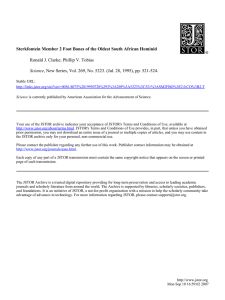
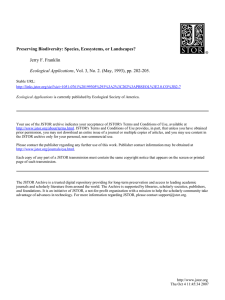
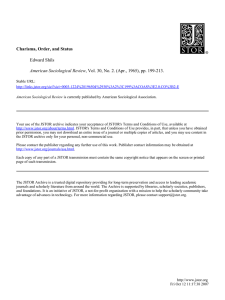
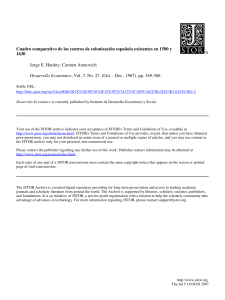
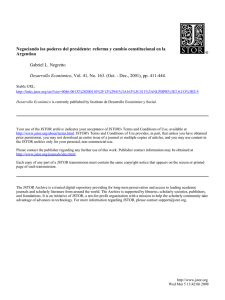

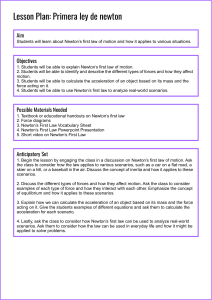
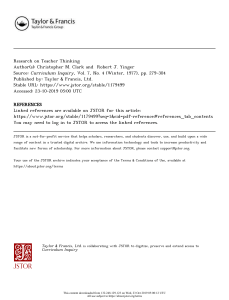
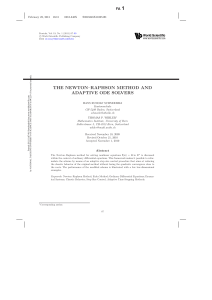

![08. Newton Methods for Nonlinear Problems Affine Invariance and Adaptive Algorithms [Deuflhard 2011-09-15]](http://s2.studylib.es/store/data/009390187_1-2ff56c0cfb34fa0b992320c4c33cdb85-300x300.png)